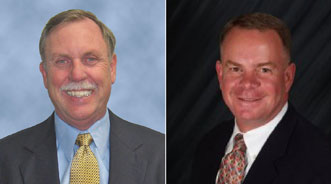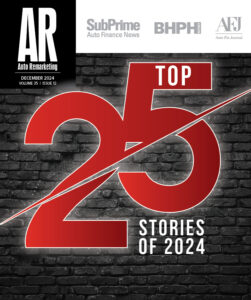First Recovery Industry Scorecard Reveals Success Rates & More

The first Recovery Industry Scorecard discovered that the average success rate for repossession is 65.61 percent. The highest success rate came in at 79.84 percent, while the lowest was 38.30 percent.
The scorecard also revealed average number of days needed to complete an involuntary recovery was 14 days, with a range spanning from 5.29 days to 47.51 days. Not surprisingly, the voluntary recovery average was much shorter at three days. This range swung from 1.82 days to 6.34 days.
The results are based on data submitted by recovery agencies and covered 2009, regardless of when an assignment was made. Breaking down the results took officials more than 18 months as they had to overcome industry apprehension and technological obstacles.
Origins of the Scorecard
ARA Data Committee chair Mike Plue explained that the idea for a scorecard first came about during the association’s inaugural Repossession Summit. Plue, the owner of Premier Recovery Service in San Diego, recalled that he was astonished that some kind of industry benchmark wasn’t already in place when he ventured into the repossession industry less than 10 years ago.
“In a lot of ways, we’re a lot like Wall Street where we deal with probability,” Plue offered. “When we get an assignment, it’s not 100 percent that we will get the vehicle. If you look at Wall Street, everything is based on returns on investment.
“In our industry, I was shocked at how much the decision process was based on, ‘What’s your price,’” he continued. “When you’re talking about a $15,000 average vehicle loan, the difference of $50 in price from my perspective didn’t seem like the biggest deal. I would have been the most focused on what’s your success rate and being able to document that.”
In developing the scorecard ARA and Subprime Analytics had to rely on agencies that use one of the industry’s common software programs such as RDN, Prios or Repros.
“The data committee was instrumental that the measurements were defined properly so the participants would uniformly provide the data in a manner that was consistent and measurable between each of the participants,” noted Ken Shilson, president of Subprime Analytics and founder of the National Alliance of Buy-Here, Pay-Here Dealers.
Shilson was also charged with quelling fears about data breaches as repo agencies submitted such sensitive material. But thanks to a series of disclosures, software development and NABD’s reputation as an independent body, Shilson said accurate data poured in and was turned into highly sought-after industry benchmarks as well as customizable reports for each participant.
The individual reports apparently also calmed another area of anxiety. Shilson’s firm gave each company an assigned code and only the owner knew his company’s code. The overall results could be reviewed, but each participant’s confidentiality remained intact.
“We were very fortunate to have Ken at our disposal,” Plue insisted. “For our membership, any company giving their data to someone else, they’re very concerned about security and confidentiality. With Ken’s company being a third party and Ken being a licensed CPA and being well-versed in confidentially and nondisclosure agreements, it just brought a tremendous amount of creditability to the project internally.
“I think we got much higher participation than if we had not Ken involved,” Plue continued.
What Exactly Does the Scorecard Cover?
Each participant learned how they fared against other recovery agencies on a host of categories. Every report included analysis of how many repossessions were conducted by each participant during the year, as well as a breakdown between voluntary and involuntary recoveries.
The scorecard covered 263,319 assignments and 158,152 recoveries. The size of operations ranged from 82 assignments (with 61 recoveries) to 53,946 assignments (with 31,708 recoveries).
Subprime Analytics and ARA both hope future industry scorecards can offer even more detailed analysis such as a geographic comparison. Another member of ARA’s Data Committee, Phil Hourican, described what this type of data could mean for the repossession industry.
“Our customers could see how there is an interesting differentiation between repossessing in New York City and rates there as opposed to Des Moines, Iowa, where people still may be leaving the keys in the car when they go to church on Sunday morning,” pointed out Hourican, owner of Premier Finance Adjusters of Delmont, Pa., located outside of Pittsburgh.
“I think some of our customers are aware of these differences. But as we get more data and get some interesting perspective from a geographic difference, our customers can make more reasoned decisions about who should be repossessing their vehicle,” Hourican continued.
Utilizing the Scorecard as a Marketing Tool
Because of the independent nature of the scorecard, Plue and his fellow ARA committee members believe it can help bolster participants and the recovery industry as a whole. The scorecard can be used to verify productivity to lenders and other companies that ask for repossession services.
Plue mentioned that he gained an additional client the same day he showed the scorecard. Dick Frame, owner of Midland Recovery in Columbia, S.C., is looking to do the same.
“You can say your recovery rate is whatever you want it to be,” Frame interjected. “This gives us an independent viewpoint and something the clients can use to gauge as they go forward.”
And it appears at the outset lenders like the merits of this scorecard.
“The scorecard is a valuable tool to evaluate a recovery agent’s performance,” noted Gene Fant, director of recovery at Auto Finance Now.
“We recently opened 10 new offices in the United States, and the scorecard allows us to find agents with the highest rated performance to serve all 10 offices,” Fant added.
Growing the Participation Level and Looking Ahead
Plue shared an analogy for what he hopes will be greater participation in recovery scorecards going forward.
“There’s an experience curve,” Plue began. “I remember when ATMs first came out and people were reluctant to use ATMs. They wanted to go into the bank and wait in line and make the deposit with the tellers. Now there’s been that experience curve where people are much more comfortable. I don’t think any of us would bank somewhere that didn’t have ATMs and online banking and all of these other things.
“The people who are in the trade associations are in the elite within the industry,” he stressed. “One of the things they want to be able to do is distinguish themselves from the fly-by-night company.”
Les McCook, executive director of ARA, emphasized the association’s committee “put endless time and effort to bring this initiative to the industry.”
McCook went on to say that “this scorecard will raise the standards of how recovery agents do business, and with the help of the lending community, we look forward to seeing it become a standardized part of the recovery industry.”
The next recovery industry scorecard is planned for release in January and will include data records from participants for 2010. For more information, contact ARA at (972) 755-4755 or e-mail homeoffice@americanrecoveryassn.org.

 View The Latest Edition
View The Latest Edition

